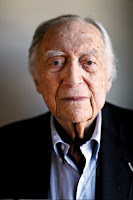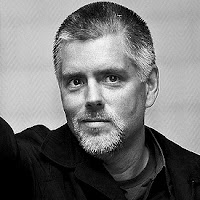1.) What does Thomas Sutcliffe mean when he says "Films need to seduce their audience into long term commitment. While there are many types of seduction, the temptation to go for instant arousal is almost irresistible"?
Thomas Sutcliffe is suggesting that the film director should seduce the audience into a long term commitment by creating a unique beginning to a film opening which will grab the attention of most viewers and will then want to watch the rest of the film. He is also saying the typical film openings to the some films are not standing out and the audience are demanding something more creative and unique which creates suspense to the openings.
2.) According to Director Jean Jacques Beineix, what are the risks to "instant arousal"?
The risks to 'instant arousal' is that once they have produced a three minute film opening which is 'strong' and straight-forward directors take a big risk of asking themselves questions in what to do, after they have produced a strong opening. The directors take bigger risks in order to satisfy the audience.
3.) Explain why a good beginning must make the audience feel that it doesn't know nearly enough yet, and at the same time make sure it doesn't know too little?
The reason why a good beginning should have these aspects in their film opening is so the audience are left reeling and also allows them to question what the opening was about. A good beginning creates suspense and grabs the attention of the audience, if the audience are not satisfied by the opening they will not bother watching the rest of the film this is mainly because they have lost interest.

4.) What does critic Stanley Kauffmann describe as the classic opening? why does this work?
Stanley Kauffmann describes a classic opening as an establishing shot of New York city which then is a close up of a building, the camera then goes up the building to a window. It is then seen inside the window travelling past the receptionist and then you have the private office. The whole of the opening tells the audience about the occupation of the hero and where the main setting is. This opening works because it has everything in place and organised which makes it easier for the audience to figure out what is happening and how the setting links to the film. It is also introducing main characters.

5.) Why is Kyle Cooper's title sequence to the film seven so effective?
 The reason why Kyle Coopers title sequence is so effective is because is tells the first part of the story. The images posted a long with the credits foreshadows what is to come. It creates tension and grabs the attention of the audience this is because the images are strange and this creates curiosity.
The reason why Kyle Coopers title sequence is so effective is because is tells the first part of the story. The images posted a long with the credits foreshadows what is to come. It creates tension and grabs the attention of the audience this is because the images are strange and this creates curiosity.
6.) What did Orson Welles want to achieve with his opening to the film 'A touch of Evil'? What did universal studios do to it? why?
Orson welles wanted to achieve a good film opening by 'plunging' the audience straight into the story without any title music or credits. Universal studios didn't want to start the title sequence this way because it was confusing and no one would understand it so they created a final cut of the opening and then won the battle.
7.) What is meant by "A favourite trick of Film Noir"? what is the trick?
The Favourite trick of Film Noir is portraying the ending of a film instead of the beginning in the film opening. The film is portraying a destination instead of a departure point which is foreshadowing what is to come.
8.) How does the opening to the film "The Shining" create suspense?
The opening to the film creates suspense using sound, camera and Mise en scene.
- Non-diegetic sound of a Trumpet - This creates suspense because it grabs the attention of the audience and allows them to question the climax of the film. The eerie sound track creates tension which automatically creates suspense because it is setting the mood and tone of the film. Overall this soundtrack is used to foreshadow what is to come, and also to keep the audience in suspense.
- Camera - (Tracking and wide shot) - This creates suspense because it is focusing on the small object and allowing the audience to capture what is happening. The tracking also foreshadows something/someone waiting to hurt these people. The high angle shot and wide shot creates suspense because it tells us that they are heading in the wrong direction and are being watched.





















































